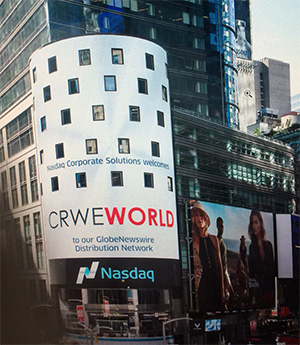From chronic pain to 12,000 steps a day: Lynnette’s story of renewed possibility
(BPT) - How Medtronic spinal cord stimulation therapy helped one woman reclaim her life.
For more than a decade, Lynnette lived in the shadow of debilitating pain. What began as persistent discomfort in her back grew into something that touched and limited nearly every aspect of her daily life. "There were days I couldn't get out of bed," Lynnette recalls.
Lynnette is far from alone. Chronic pain is one of the most widespread yet underrecognized public health challenges, affecting millions of people physically, emotionally, and socially.1 Over the years, pain has cost Lynnette her independence, her mobility and even her ability to connect with others. "I stayed home most of the time," she says. "I had no life."
An unsuccessful attempt at relief
Like many people with chronic pain, Lynnette had explored multiple conventional medical management and treatment options with little success. In 2014, she underwent surgery to receive her first non-Medtronic spinal cord stimulation (SCS) device, but it wasn't the experience she hoped for. "It caused more pain. I was falling … it was shocking me," she explains. "After six difficult months, I turned the device off. In 2017, I had it removed."
At that point, Lynnette believed her options had run out. She had tried an implant, and it hadn't worked. The prospect of trying again felt both risky and emotionally exhausting.
Another approach: SCS therapy with closed-loop sensing technology from Medtronic
Several years later, Lynnette was introduced to Medtronic and Inceptiv™ SCS therapy with closed-loop sensing technology, a next-generation spinal cord stimulator that senses the neural response† in the spinal cord and automatically adjusts stimulation to maintain consistent therapy moment to moment.
This adaptive design is meant to help patients maintain comfort throughout daily activities, avoiding the fluctuations that can occur with fixed-output systems.2 "I did not want another stimulator," Lynnette admits. "But my doctor gave me information and made me feel like it was a good move for me."
Although the shift from skepticism to hope didn't happen overnight, Lynnette eventually chose to move forward with the Inceptiv™ SCS system and discovered firsthand how different it could be.
Small steps. Big change.
Just one week after she started to use her Inceptiv™ SCS system, Lynnette began to experience positive impacts on her life.
Today, her physical activity level speaks for itself, as she shares, "Now I walk 10,000 to 12,000 steps a day. I can go bowling, go dancing, even go skiing if I want."
After years of feeling sidelined from her own life by pain, Lynnette is re-engaging with life in ways, and with the freedom, she once thought was behind her. "It gave me a more positive outlook. I have all that back," she says. "There is no comparison."
Expert perspective: Supporting innovation in neuromodulation
Dr. Ashwini Sharan, Chief Medical Officer for Medtronic Neuromodulation, says Lynnette's story reflects what's possible when patients receive personalized therapy grounded in innovation and research. "Spinal cord stimulation offers a meaningful option for patients living with chronic, often invisible pain, particularly when conventional medical management hasn't provided relief," says Dr. Sharan. "Medtronic innovations like SCS with closed-loop technology aren't just treating symptoms; we're helping patients regain their quality of life3 whether that means walking thousands of steps a day, reengaging socially or simply living with more dignity."
Lynnette's story resonates at a moment of heightened focus on pain during September's Pain Awareness Month, an annual global campaign organized to help spread awareness of issues related to pain and pain management. It's a time when healthcare providers, policymakers and patient communities come together to spotlight the impact of debilitating pain, the complexity of pain management and the hope that innovative technologies can offer patients and their caregivers.
While Lynnette's experience centers on chronic back pain, the broader Medtronic pain portfolio includes therapies that address chronic pain at different stages of treatment. From spinal cord stimulation to targeted drug delivery, Medtronic is committed to giving people more ways to reclaim their mobility and quality of life. "Everyone's journey with pain is different," Dr. Sharan adds. "But no one should have to face it without options."
A life reclaimed
For Lynnette, the outcome isn't just physical, it's emotional. "I didn't think I'd ever get my life back," she says. "But now I can move, connect and live again."
Learn more
SCS therapy is not for everyone. Patients should always discuss the potential risks and benefits of the therapy with a physician. Not everyone will receive the same results. Risks include infection, lead movement, pain at the implant site and loss of therapy effectiveness.
If you or someone you know is living with chronic pain, learn more here about SCS and the broader pain management therapies offered by Medtronic. Patients considering SCS therapy should discuss treatment options with their healthcare provider.
Important Safety Information for SCS:
Risks include infection, lead movement, pain at the implant site, and loss of therapy effectiveness. Not everyone responds to SCS in the same way, and your experiences may vary. Patients with diabetes may have an increased risk for surgical complications. Talk to your doctor about your ability to undergo surgery.
Spinal Cord Stimulation Brief Summary:
Indications:Spinal cord stimulation (SCS) is indicated as an aid in the management of chronic, intractable pain of the trunk and/or limbs-including unilateral or bilateral pain.
Contraindications:Diathermy - Energy from diathermy can be transferred through the implanted system and cause tissue damage resulting in severe injury or death.
Warnings:Sources of electromagnetic interference (e.g., defibrillation, electrocautery, MRI, RF ablation, and therapeutic ultrasound) can interact with the system, resulting in unexpected changes in stimulation, serious patient injury or death. An implanted cardiac device (e.g., pacemaker, defibrillator) may damage a neurostimulator, and electrical pulses from the neurostimulator may cause inappropriate response of the cardiac device. Patients with diabetes may have more frequent and severe complications with surgery. A preoperative assessment is advised for some patients with diabetes to confirm they are appropriate candidates for surgery.
Precautions:Safety and effectiveness has not been established for pediatric use, pregnancy, unborn fetus, or delivery. Avoid activities that put stress on the implanted neurostimulation system components. Recharging a rechargeable neurostimulator may result in skin irritation or redness near the implant site.
Adverse events:May include: undesirable change in stimulation (uncomfortable, jolting or shocking); hematoma, epidural hemorrhage, paralysis, seroma, infection, erosion, device malfunction or migration, pain at implant site, loss of pain relief, and other surgical risks. Adverse events may result in fluctuations in blood glucose in patients with diabetes. Refer to www.medtronic.com for product manuals for complete indications, contraindications, warnings, precautions and potential adverse events. Rx only.
Rev 04/22
Footnotes/References
† Sensing signals may not be measurable in all cases.
Product usage represented may not be approved or cleared in all markets.
1. Rikard SM, et al. Chronic Pain Among Adults - United States, 2019-2021. MMWR Morb Mortal Wkly Rep 2023;72:379-385.
2. Will A, et al. Improvements in Therapy Experience with Evoked Compound Action Potential Controlled, Closed-Loop Spinal Cord Stimulation-Primary Outcome of the ECHO-MAC Randomized Clinical Trial. J Pain. 2024 Nov;25(11):104646.
3. Mohabbati V, Sullivan R, Yu J, et al. Early Outcomes with a Flexible ECAP Based Closed Loop Using Multiplexed Spinal Cord Stimulation Waveforms-Single-arm Study with In-clinic Randomized Crossover Testing. Pain Med. Published online May 16, 2025.
Source: BrandPoint
Breaking News: Bondezz™ Appoints Brian Colando as Vice President of Sales to Lead Wholesale Expansion


















